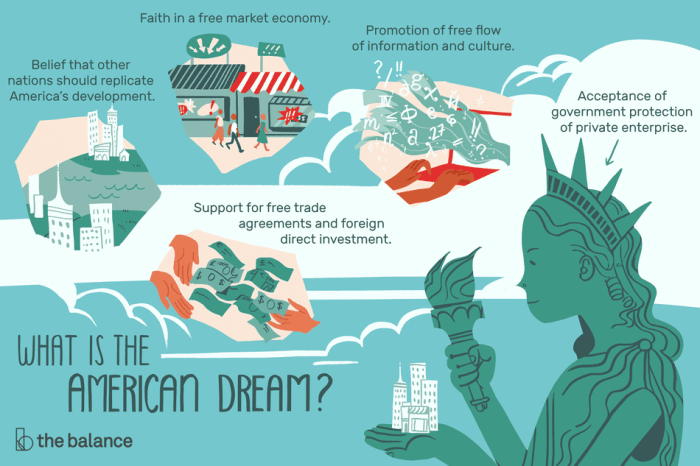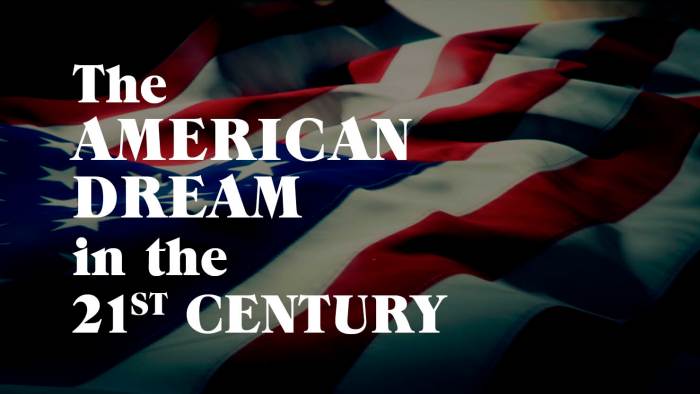The american dream in the 21st century abitur – The American Dream in the 21st Century: Redefining Success in a Changing World presents a captivating exploration of the evolution and challenges facing the American Dream in the modern era. As technology, globalization, and societal shifts reshape our aspirations, this discourse examines how individuals and communities navigate the pursuit of success and fulfillment in the 21st century.
This comprehensive analysis delves into the economic, social, cultural, and environmental factors that shape the American Dream today, providing insights into the opportunities and obstacles that lie ahead.
The American Dream in the 21st Century

The American Dream has long been a symbol of hope and opportunity for people from all over the world. It is the belief that anyone, regardless of their background, can achieve success in the United States through hard work and determination.
However, the American Dream has evolved over time, and it is important to understand its changing nature in the 21st century.
Historical Context and Evolution of the American Dream in the 21st Century, The american dream in the 21st century abitur
The American Dream has its roots in the Declaration of Independence, which states that all men are created equal and have the right to life, liberty, and the pursuit of happiness. This idea was further enshrined in the Constitution, which guarantees the right to own property, pursue a career, and participate in government.
In the 20th century, the American Dream was defined by the rise of the middle class and the expansion of suburbs. However, the American Dream has faced challenges in recent decades, as the economy has become more globalized and technology has changed the way we work.
Economic Challenges and Opportunities in the 21st Century American Dream
Globalization has led to increased competition for jobs, and automation has eliminated many low-skill jobs. This has made it more difficult for people to achieve financial success. However, there are also new economic opportunities in the 21st century. The rise of the internet has created new industries and jobs, and the growth of the service sector has created new opportunities for employment.
Social and Cultural Factors Shaping the American Dream
Education is still seen as the key to success in the American Dream. However, the cost of college has risen dramatically in recent years, making it more difficult for people to afford a higher education. Social mobility has also declined in recent decades, meaning that people are less likely to move up the economic ladder than their parents.
Cultural diversity is also a key factor shaping the American Dream in the 21st century. The United States is a nation of immigrants, and people from all over the world come here in search of a better life. Immigrants often face challenges in achieving the American Dream, but they also bring new ideas and perspectives to the country.
Commonly Asked Questions: The American Dream In The 21st Century Abitur
How has the American Dream changed in the 21st century?
The American Dream in the 21st century has shifted from a focus on material wealth and upward mobility to a broader emphasis on personal fulfillment, social justice, and environmental sustainability.
What are the major economic challenges facing the American Dream today?
Economic inequality, automation, and the rising cost of living pose significant challenges to achieving economic success in the 21st century.
How does social media influence the American Dream?
Social media can both amplify aspirations and create unrealistic expectations, shaping self-perception and influencing career choices.


